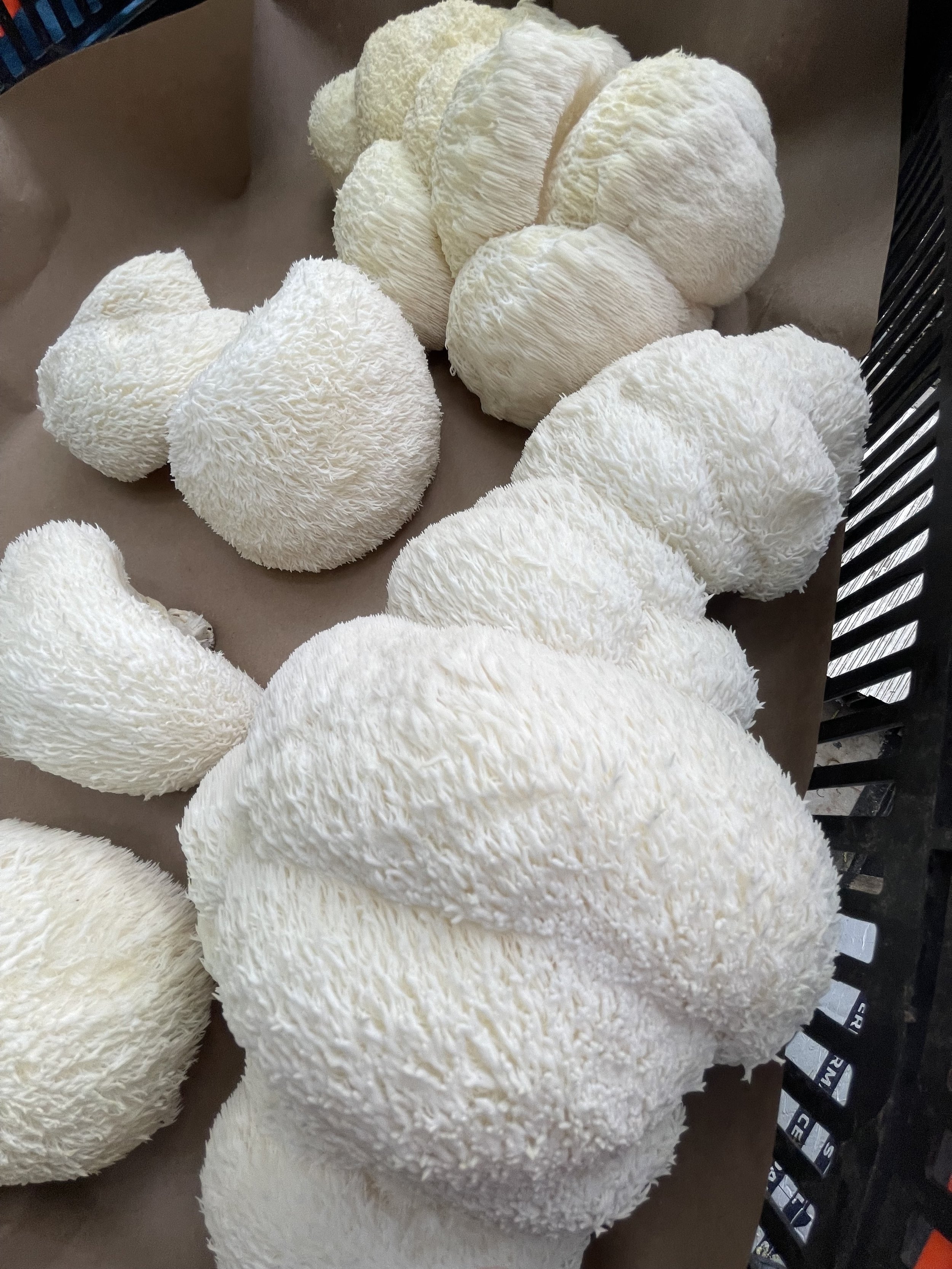
What is Lion’s Mane?
Lion’s Mane (Hericium erinaceus) is a medicinal mushroom known for its unique appearance and potential to support brain health, memory, and nerve regeneration. Lion’s Mane contains hericenones and erinacines, compounds that may stimulate nerve growth factor (NGF), which plays a role in the growth and maintenance of brain and nerve cells.
Research into Lion's Mane describes potential benefits including:
Improved memory and cognitive function
Nervous system support
Enhanced focus and mental clarity
Mood regulation and possible anxiety reduction
Neuroprotection and support for brain plasticity
When will I notice the effects?
Some people report improved focus and mood within a week, but cognitive and neurological benefits typically build over several weeks to months of regular use.
Can I take Lion’s Mane every day?
Yes, daily use is common and generally recommended for cognitive and nerve support.
Is it safe to take with other supplements or medications?
Lion’s Mane is well-tolerated, but if you’re taking medication (especially for diabetes, blood pressure, or mental health) or have questions or concerns, it’s wise to consult a healthcare provider.
How should I store it, and how long does it last?
Store in a cool, dark place. With proper storage, it can last 1–3 years thanks to the alcohol base. The tincture does NOT need to be refrigerated.
Citation List
🧠 Neuroregenerative and Nerve Growth Factor (NGF) Activity
Kawagishi, H., et al. (1994).
Hericenones and erinacines: stimulators of nerve growth factor (NGF)-synthesis in Hericium erinaceus.
Planta Medica, 60(05), 415–418.
https://doi.org/10.1055/s-2006-959530Mori, K., et al. (2009).
Nerve growth factor-inducing activity of Hericium erinaceus in 1321N1 human astrocytoma cells.
Biological & Pharmaceutical Bulletin, 32(5), 861–864.
https://doi.org/10.1248/bpb.32.861Wong, K. H., et al. (2016).
Neuroprotective properties of Hericium erinaceus: prevention against cognitive impairment.
International Journal of Medicinal Mushrooms, 18(4), 387–394.
https://doi.org/10.1615/IntJMedMushrooms.v18.i4.50
🧪 Active Compounds: Hericenones & Erinacines
Kenmoku, H., et al. (2002).
Erinacine production in culture of Hericium erinaceum.
Mycoscience, 43(4), 367–373.
https://doi.org/10.1007/BF02464384Shimbo, M., et al. (2005).
Effects of Hericium erinaceus on NGF secretion and expression in astrocytes.
Bioscience, Biotechnology, and Biochemistry, 69(4), 800–805.
https://doi.org/10.1271/bbb.69.800
🧬 Cognitive Function and Memory Studies (Animal & Human)
Nagano, M., et al. (2010).
Reduction of depression and anxiety by 4 weeks Hericium erinaceus intake: a randomized controlled pilot study.
Biomedical Research, 31(4), 231–237.
https://doi.org/10.2220/biomedres.31.231Li, I. C., et al. (2018).
Neurohealth properties of Hericium erinaceus mycelia enriched with erinacine A: a clinical study.
BioMed Research International, 2018, Article ID 3160329.
https://doi.org/10.1155/2018/3160329Trovato, A., et al. (2022).
Hericium erinaceus in neurodegenerative diseases: a review on its effects on cognitive functions.
Nutrients, 14(13), 2739.
https://doi.org/10.3390/nu14132739






